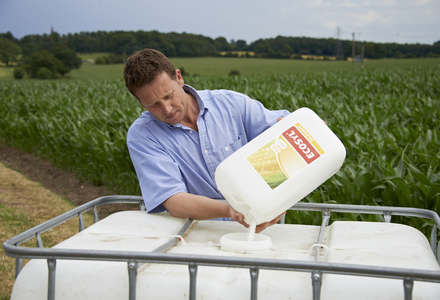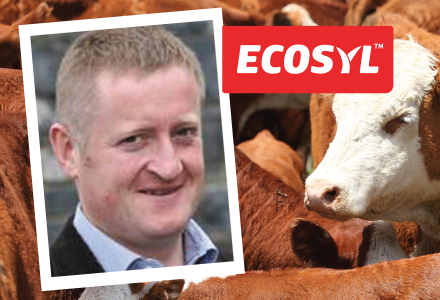Getting farm and forage fit for the future
26 May 2020
A new herd, a new parlour and a focus on more milk from forage are some of the key steps being taken to set one North Yorkshire farm up for the future.
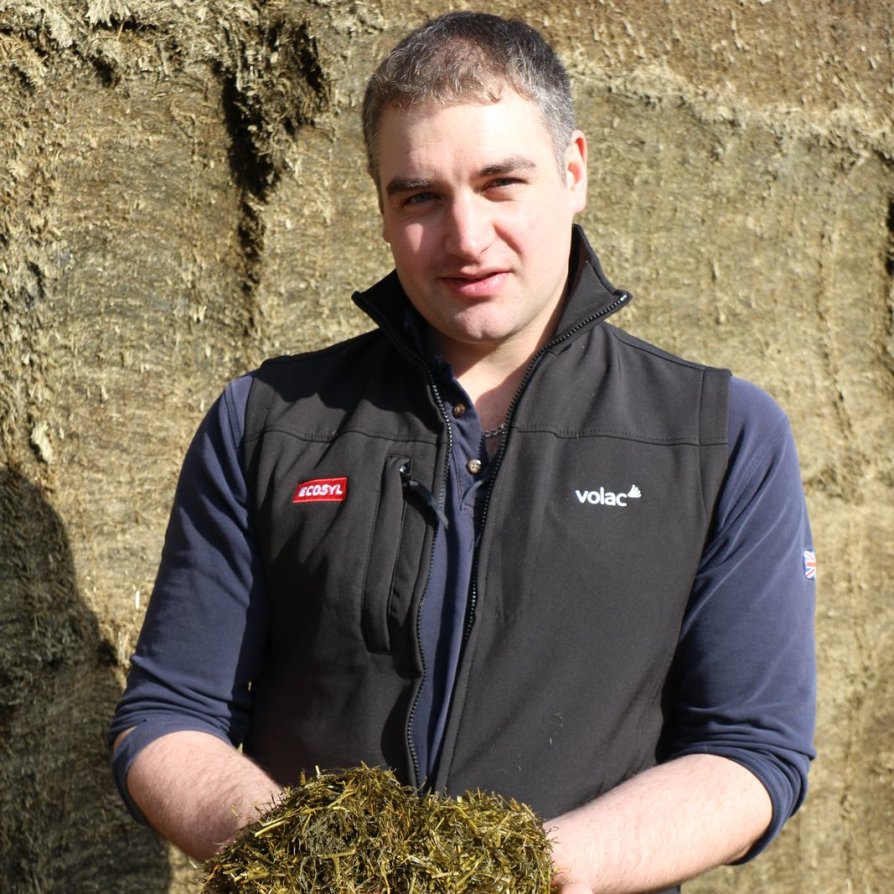
Farm manager Micheal Metcalfe of JR Elliott, Bolton Hall Farms in Leyburn, is in the midst of implementing a pretty major transformation.
Working at the farm since 2008, initially alongside the previous farm manager before taking over the farm manager role himself three years ago, he says the structure of the business has remained largely unaltered over the last decade or so.
But that is about to change.
Currently the business is run as three separate units – one for a 406-strong autumn block-calved Friesian x Montbéliarde cross dairy herd, one for youngstock, and one for sheep.
But low profitability from lambs will see the sheep replaced with a second dairy herd over the next year – only this time spring block-calved, comprising 150 three-way cross Jersey x Friesian x Holsteins.
By directly replacing spring lambing with spring-calving it will allow the farm’s workforce, of Micheal plus one part-time and five full-time staff, to continue to focus on one workload peak at a time – three months of spring calving and three months of autumn calving.
It will also even out milk production for the farm’s milk buyer, and allow the business to make best use of homegrown grass, as it works towards a goal of maximising milk from grazing with the spring calvers and from silage with the autumn calvers.
Complementing the livestock changes will also be infrastructure updates. New housing is being built for the spring-calving herd, yard areas have been redesigned under a mid-tier Countryside stewardship grant, slurry storage capacity is being increased, and there are plans for a new milking parlour.
“The changes are all about setting the farm up for the next 30 years,” Micheal explains. “I’ve been wanting to modernise the farm for everyone. The sheep were only just breaking even.
We’re also trying to reduce bought-in feed use and increase milk from forage. Jersey cross cows are well suited to a grazing-based system. Also, the better the silage quality, the less concentrate that is needed in my view,” he adds.
Average yield for the current autumn-calving herd is 8,000 litres/cow, with 3,700 litres of this coming from forage. Butterfat and protein stand at 4.52% and 3.46% respectively, with the business on a fats and protein contract to supply milk for cheesemaking to Wensleydale Creamery. Milk from the new spring-calving herd is destined for the same.
The plan is for the spring calvers to start calving in late February/early March next year. By adding this grazing-based herd into the overall system, it will allow the business to make as much milk as possible from what Micheal views as the farm’s lowest cost feed: spring grass.
Meanwhile, the existing autumn-calvers are housed as soon as they start calving at the end of August, so good silage from day one is crucial.
Improving silage making processes
Routinely, pasture land and silage fields are reseeded every five years to maximise productivity, and the business has recently switched to making its own silage to get exactly what it wants.
I’m quite particular about silage,” Micheal continues. “In the two years that we’ve made it ourselves we’ve had really good results. We look after the autumn calvers as much as possible to get maximum milk from forage at that time of year.
“If you’ve got horrible silage that isn’t being eaten, you’re not going to get the benefits. With wet and stodgy silage, cows have to work hard at it.
“When we stopped using a contractor we joined with a neighbour to buy a trailed forage harvester. We already had a rake, tedder, silage trailers and a JCB to buckrake with, so the only other things we needed to buy were our own mowers.”
Now, all silaging operations from cutting to clamping are carried out in-house. Four cuts a year are taken in a multi-cut type system, starting in early May and continuing at roughly monthly intervals thereafter.
Other changes introduced have included chopping grass slightly longer to reduce slippage of the young grass in the clamp, and Micheal has switched to Ecosyl as his additive of choice.
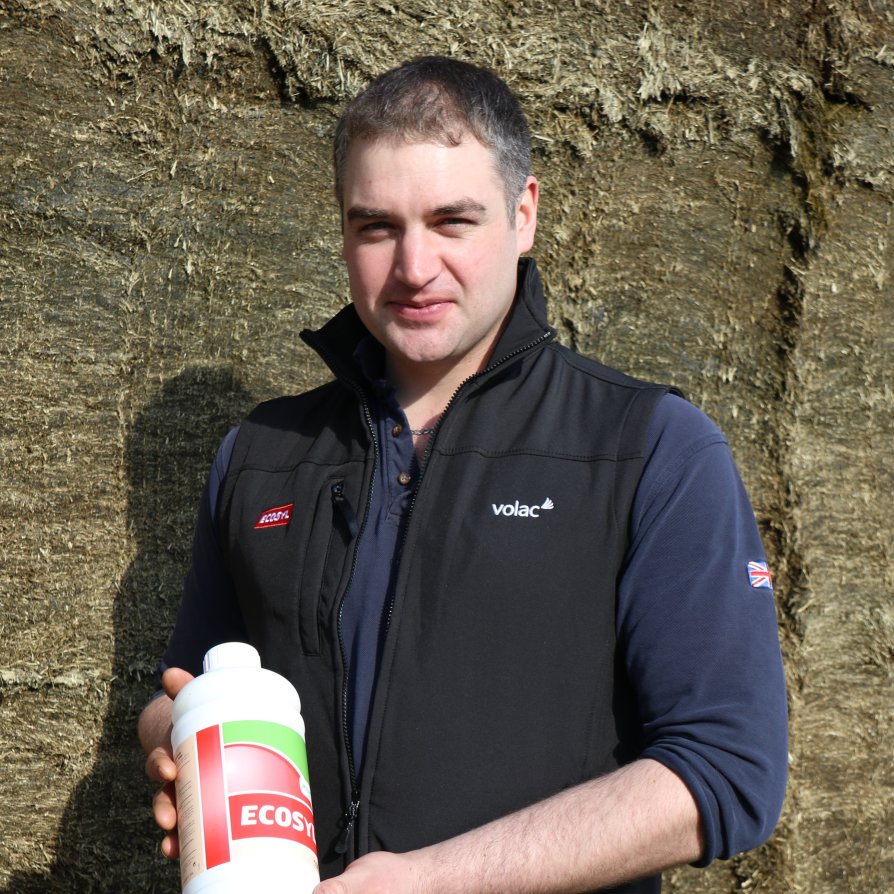
Silage quality results from the first three cuts of last season show D values ranging from 63.1–75.8, ME ranging from 10.1–12.1, and protein from 13.5– 15.9%. Fourth cut was baled and has not yet been analysed.
We’re trying to get the best quality silage and dry matter that we can. We went to Ecosyl for the first time last year and the silage seems really stable.
“We aim to ensile at 28% dry matter. Personally I think that gets the sugars right. But it’s not just about milk, I’ve also got to think about getting cows in calf. Good quality forage helps with fertility. We aim to get cows in calf in no more than two services.”
As part of the process of making good silage, the farm also practices high quality clamp management. Clamps are kept clean and tidy, and another benefit Micheal sees with Ecosyl is being able to apply it in an ultra-low water volume of just 20 ml/tonne of forage, rather than 2 litres/tonne used previously. This means less fetching and carrying of large quantities of water out to the field, freeing up labour to better consolidate the clamp.
Ultra-low volume appealed to us,” he says. “You just take a little bottle out to the field and top up with water. We found we had no downtime and the man on the clamp could keep rolling. The ULV applicator was also easy to fit.
Find out more about ultra low volume application
As well as the farm switching to making its own grass silage, 40-45 acres of wheat were also introduced into the rotation two years ago for wholecrop, preserved with Ecocool to protect against heating.
Autumn-calvers now receive a full TMR during the housed period – comprising grass silage, wholecrop, fodder beet, caustic-treated wheat, rapemeal, soya hulls, wheat distillers and minerals. Silage with minerals added to it is also buffer-fed after turnout.
“Currently, the autumn calvers get nothing in the parlour.” Micheal continues. “However, when we get the new parlour we will install in-parlour feeders and they will get concentrate and all minerals through there.
“The spring calvers will also get concentrate in the parlour, but it will be trial and error whether we need to buffer feed them when getting them in calf.
“Spring calvers will then be dried off over Christmas and spend January and February dry. They will get third or fourth cut silage with some minerals rather than first or second cut. But at the same time, good quality silage is still important for condition.”
In readiness for setting up the spring-calving herd, seventy bulling heifers have already arrived on the farm, with the sheep expected to go during August.
“Twelve months from now we will be calving the spring herd and hopefully have a new shed up and a new milking parlour. There are a lot of projects going on, but I’m able to leave the building contractors to get on with them,” Micheal concludes.
Choosing the right additive
Make sure you choose the right additive for the type of forage being ensiled and its percentage dry matter when looking to maximise milk from silage, says Volac business manager Jason Short, who has been working with Micheal Metcalfe.
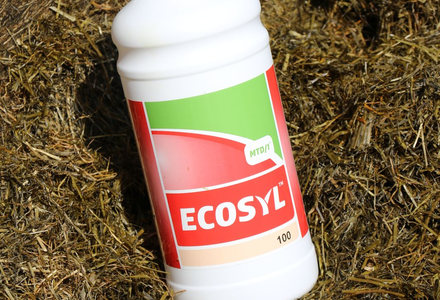
Grass silage, if made at the ideal 28-32% dry matter and well-consolidated, generally only needs an additive to boost fermentation, rather than to control heating, he says, though if made drier or poorly consolidated then heating will also become more of an issue.
By comparison, when making fermented wholecrop, he says producers should look for an additive to both aid fermentation and keep it cool, since wholecrop can be prone to heating as it is ensiled at higher dry matters, which makes it more difficult to consolidate. The same applies when making maize silage, he notes.
Using a proven additive is an integral part of conserving silage so that you can extract more milk from it,” says Jason. “But check the additive label carefully so you know exactly what it has been designed to do.
Check also on the label whether the additive can be applied using ultra-low volume application, if you are looking to use this technique, since not all additives can.”
To find out more about using Ecosyl, download our full product brochure.
Ready to order? Head over to our online order form today.
